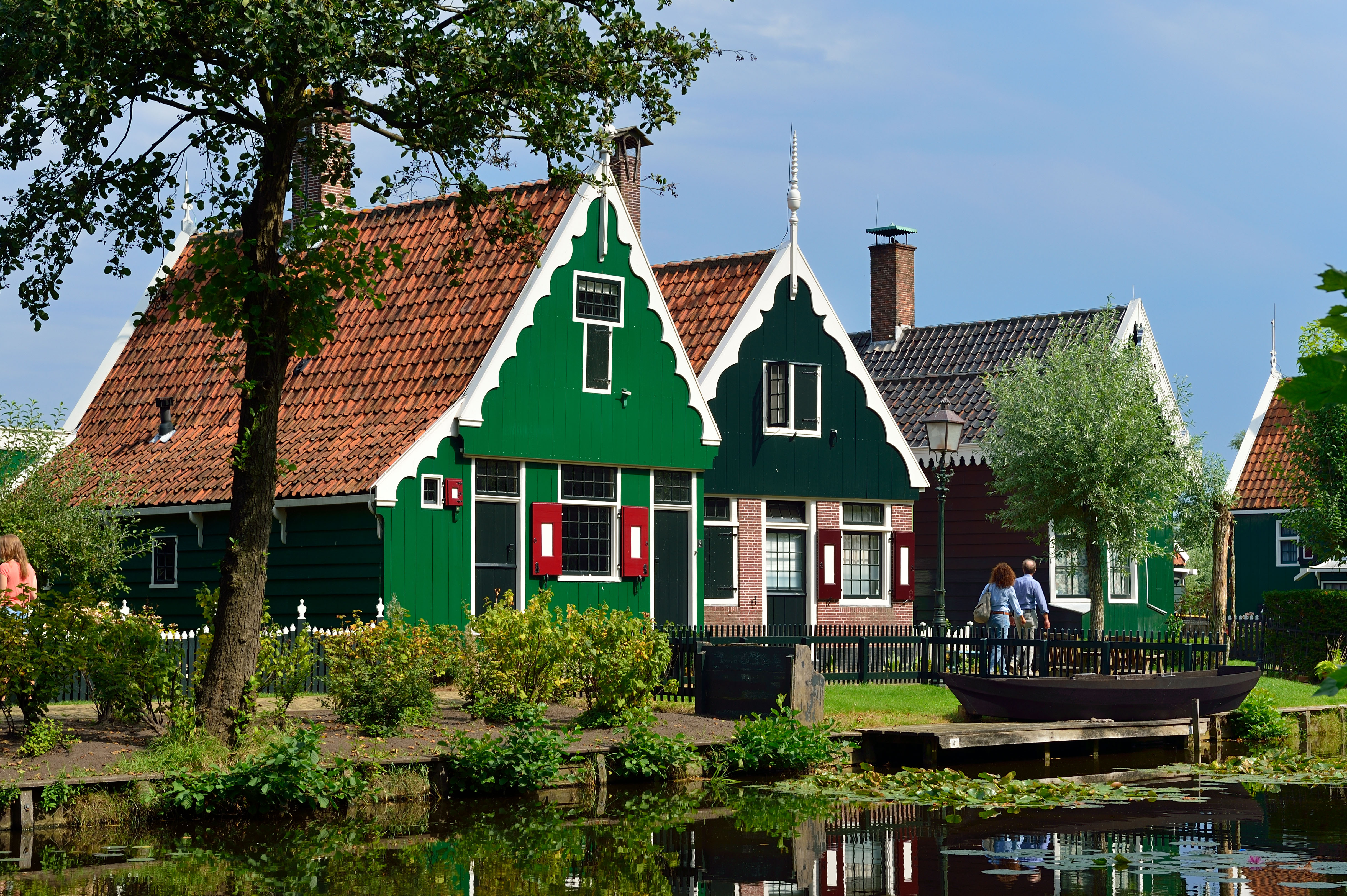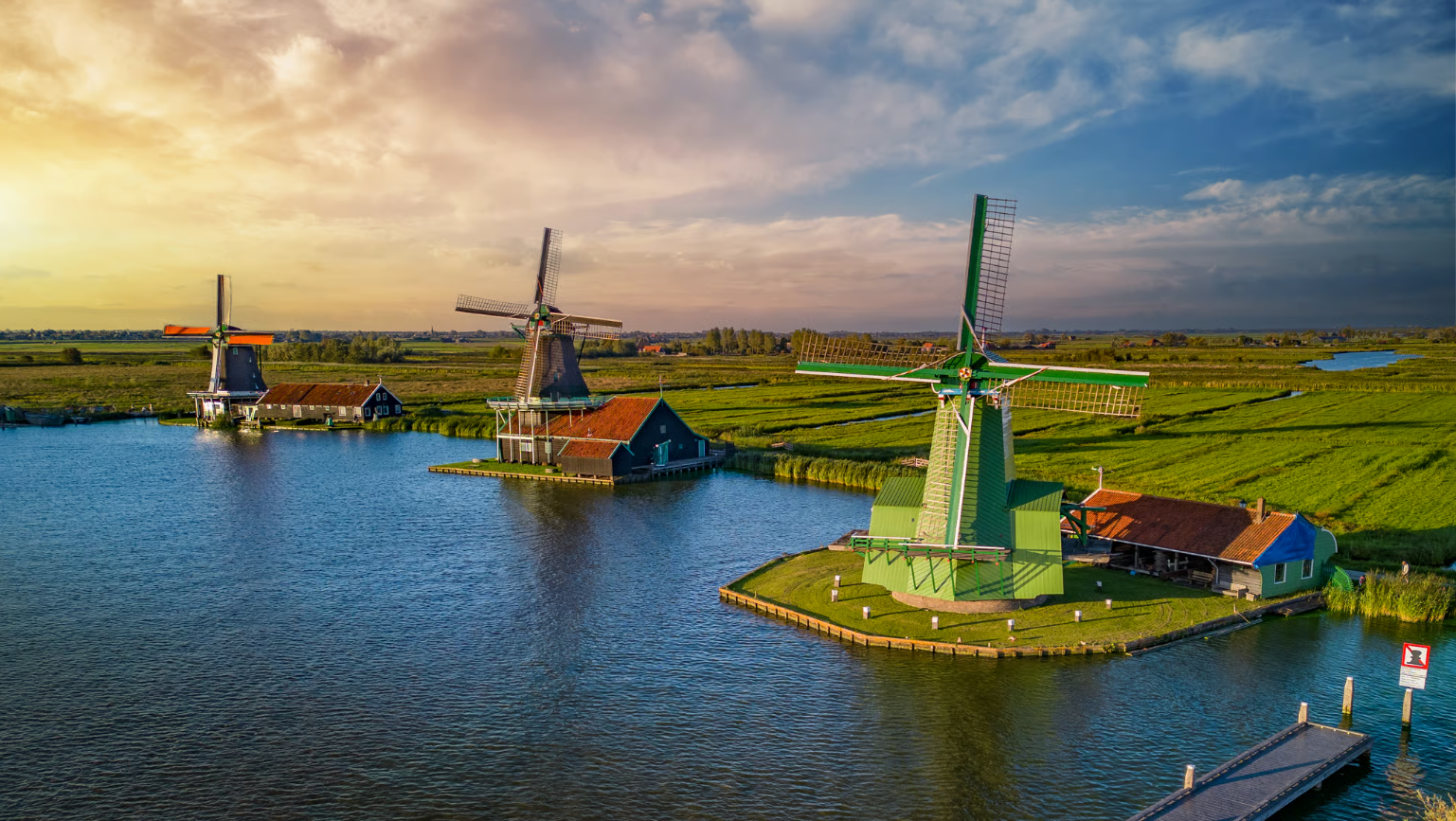Zaanse Schans, one of the Netherlands’ most picturesque villages, has long been a dream destination for travellers seeking postcard-perfect windmills, colourful wooden houses, and tulip fields that capture the essence of old Holland. But from spring 2026, visitors will have to pay a €17.50 entry fee to step into this historic gem. The move marks a major shift for the popular site, as authorities aim to balance tourism with sustainability and protect the heritage that makes Zaanse Schans so unique.

Why Zaanse Schans Is Introducing An Entry Fee
Located just 20 minutes north of Amsterdam, Zaanse Schans attracts millions of visitors every year, often overwhelming its small community of just around 100 residents. The village, which once served as an industrial hub powered by windmills, has turned into one of Europe’s busiest open-air museums. In 2024 alone, it saw over 2.6 million tourists—a staggering number for such a compact area.
Locals have long complained that the crowds have disrupted their daily lives. Narrow lanes often clog with day-trippers, driveways get blocked, and noise levels stay high from morning until dusk. Facilities such as toilets and parking areas, originally meant for residents, are under constant strain. To preserve both the village’s authenticity and its peace, local authorities have decided that visitors will now pay an entry fee starting in 2026.
The €17.50 ticket will grant access to a historic windmill and the local museum, which previously required separate passes. Revenue from the new system will go toward preserving the centuries-old structures, improving infrastructure, and ensuring the long-term protection of the site.

A Heritage Gem Worth Protecting
Zaanse Schans is much more than a photo stop—it is a living museum that preserves Dutch craftsmanship and traditions. The village is home to several working windmills, some dating back to the 18th century, that were once used for grinding spices, sawing wood, and making oil and paint. Visitors can also watch artisans craft traditional wooden clogs, sample Dutch cheeses at local farmhouses, and explore charming green-and-white wooden homes that stand as symbols of the Netherlands’ cultural past.
At its peak, the region had over 600 windmills, powering what was once one of the world’s earliest industrial zones. Today, only a few remain, making their preservation a matter of national pride. These windmills are not just tourist attractions—they are cultural icons that tell the story of Dutch innovation, sustainability, and community living.

Overcrowding And The Global Tourism Dilemma
Zaanse Schans is not alone in facing the challenge of overtourism. Around the world, several iconic destinations are taking steps to manage crowds and protect their heritage. Venice has introduced a fee for day-trippers, Barcelona has limited cruise arrivals, and Hawaii will soon implement a climate impact fee for visitors. Even Amsterdam itself has cracked down on short-term rentals and restricted new hotel developments.
The trend reflects a global shift in how destinations are handling the pressures of mass tourism. While travellers seek authentic experiences, too many visitors at once can damage local culture and degrade natural and historical landmarks. Zaanse Schans’ decision to introduce an entry ticket aligns with this new philosophy of responsible travel—focusing on quality rather than quantity.

Visiting Zaanse Schans In The Future
Despite the introduction of the entry fee, Zaanse Schans will remain a must-visit destination for anyone exploring the Netherlands. A short 20-minute train or bus ride from Amsterdam takes you to a village that feels like a step back in time. The windmills, the scent of freshly made stroopwafels, and the sight of locals cycling past colourful houses make for an unforgettable experience.
From 2026 onward, your entry ticket will not just be a pass—it will be a contribution to preserving one of the world’s most iconic villages. Paying a little extra means playing your part in keeping history alive, ensuring that the windmills of Zaanse Schans continue to turn gracefully for generations to come.
For more updates on sustainable travel and hidden gems around the world, follow Travel Moves on Instagram and Facebook.








